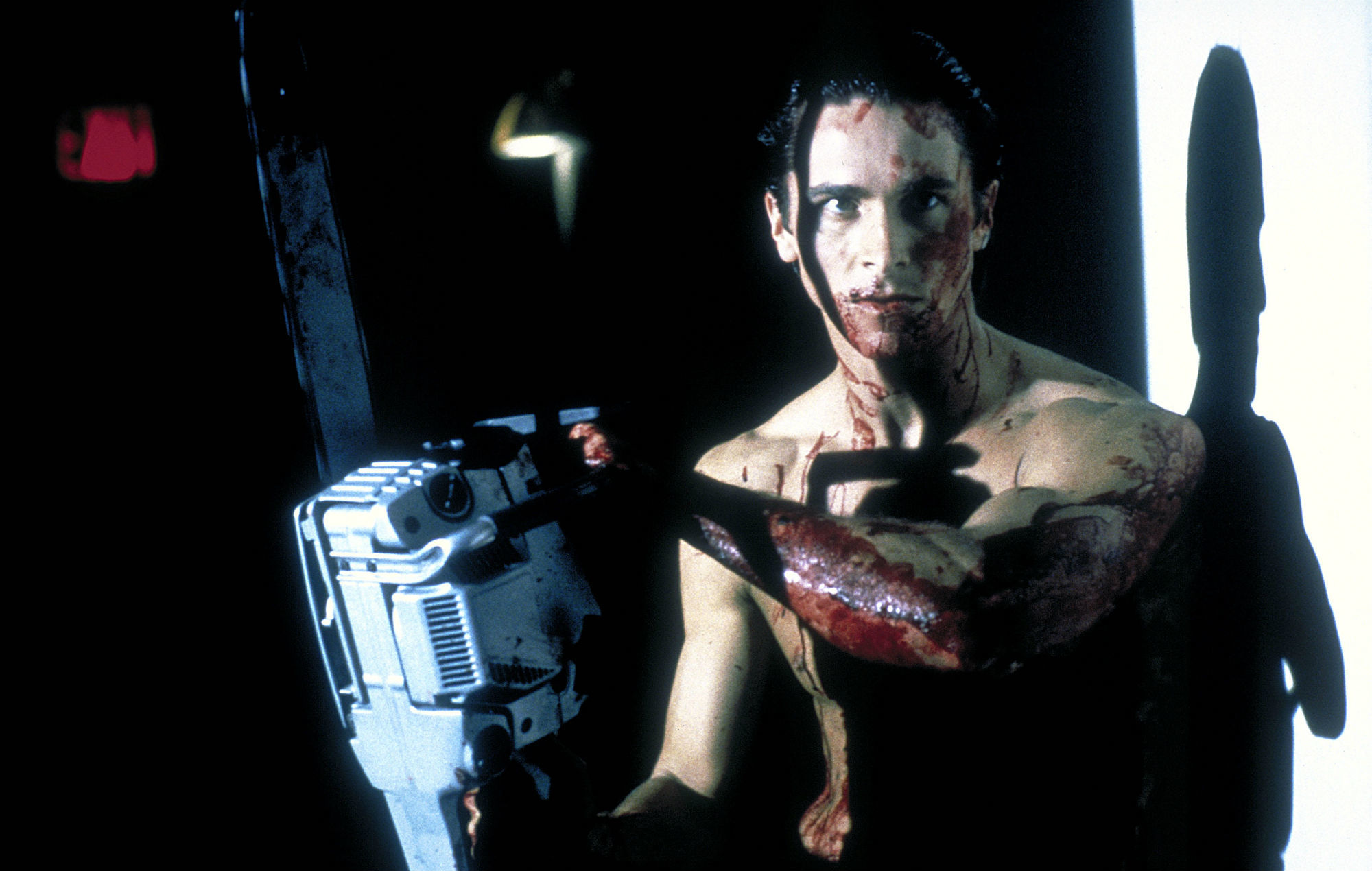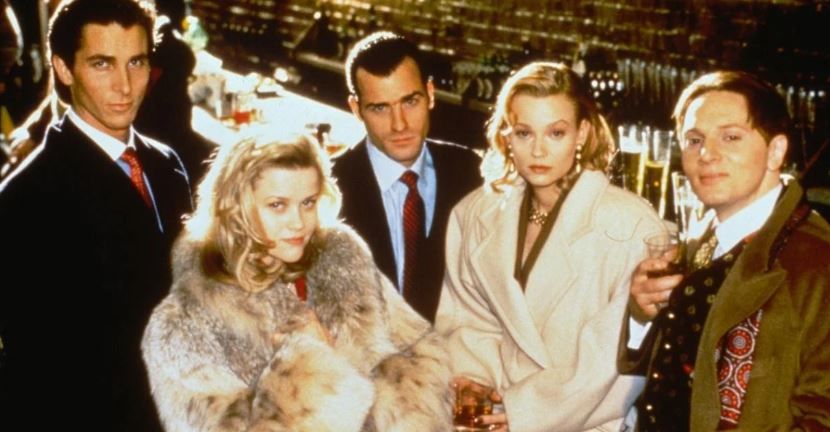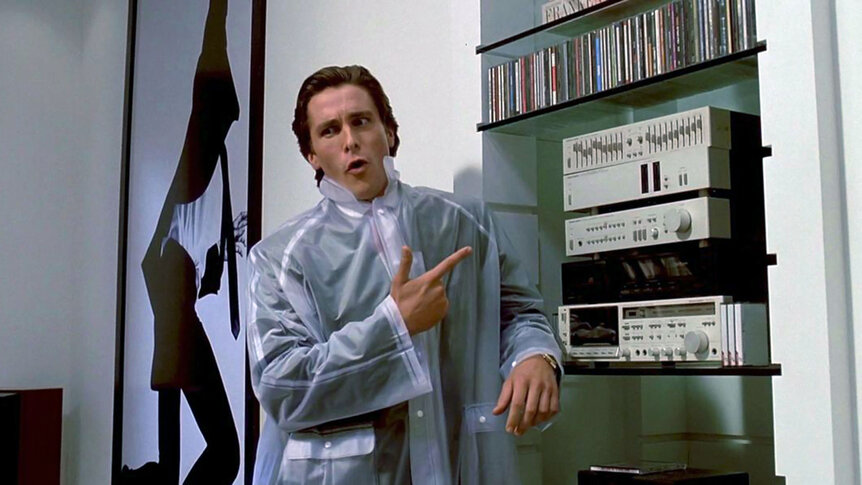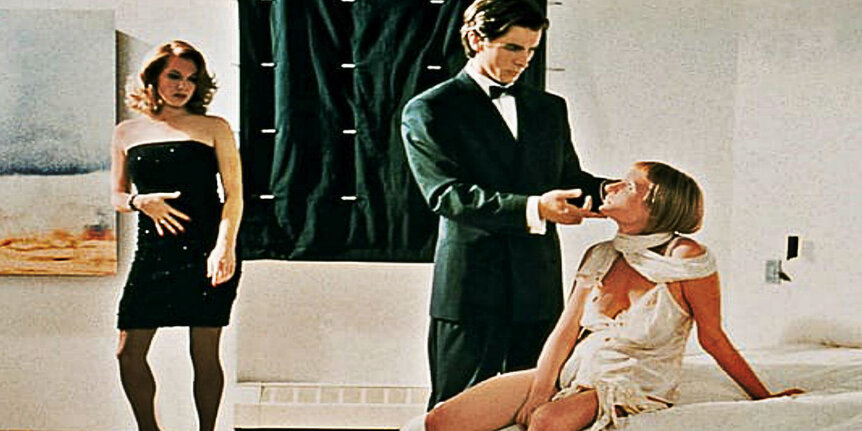Create a free profile to get unlimited access to exclusive videos, sweepstakes, and more!
Why women still love American Psycho 20 years on

It's been 20 years since American Psycho was released in cinemas, and it is still as much of a feminist masterpiece today as it was back then. Some might be confused by that assertion; this is a male-led story of a murderous Wall Street yuppie with a dangerous disdain for pretty much every woman he comes across. Certainly, those who have read the book of the same name by Bret Easton Ellis would argue that American Psycho is woman-hating in its delivery. Plenty of feminists, including Gloria Steinem, made that complaint when the novel was first published in 1991.
By the time the adaptation came to the big screen in 2000, it was already being described as "the most disgusting film of the year"; however, male and female audiences alike appreciated it as a brilliant and provocative send-up of toxic white masculinity and the consumerist culture of the late '80s.
One of the main reasons for this shift is down to the women who adapted it: writer-director Mary Harron and actor-writer Guinevere Turner. "It's just as well a woman directed American Psycho," Roger Ebert said in his review of the film. "She's transformed a novel about blood lust into a movie about men's vanity."
In 1996, Harron was hot off the back of her critically acclaimed debut I Shot Andy Warhol, which premiered that year at the Cannes Film Festival and told the story of the radical lesbian feminist Valerie Solanas' attempted murder of the Pop Art's founding father. The indie biopic offered an intriguing and irreverent examination of this deranged but brilliant figure, and it no doubt recommended the filmmaker to producer Edward R. Pressman, who also happened to be at Cannes shopping pre-sell distribution rights to American Psycho.
As a fan of the book, Harron felt the underlying themes and message had been misunderstood. "I felt like it was very unfairly treated," she told IndieWire in 2000. "I hoped there was a way to do it in which all the great things about it could become clearer."
She and Turner (who also stars in the film as Elizabeth) managed to achieve this clarity by turning up the satire and toning down the violence. They cut a lot of the extreme moments of harm, such as rape, necrophilia, and Patrick forcing a rat inside a woman's vagina in order to eat her from the inside out, and refused to linger on these murderous acts. In fact, more emphasis is put on the pre- and post-murder rituals than the actual murders themselves.
Take Paul Allen's death scene, which sees Patrick deliver a droll monologue about Huey Lewis and the News while getting himself ready to kill his colleague with an ax. The camera never departs from his face when he commits the murder — an act that only lasts a few seconds — and we only see the resulting blood splatter from each swing before the deed is done and he's lighting up a cigar.
Later Patrick picks up two sex workers, Sabrina and Christie (played by Krista Sutton and Cara Seymour), and, following a threesome, which highlights his obsession with his own sexual gratification and personal appearance, we cut from him looking at some torture weapons to the two women rushing out of the apartment after suffering what we assume is serious sexual abuse. The viewer once again does not see the violence, but it doesn't reduce the horror of the situation.
At the beginning of the scene, though, we witness Patrick once again offering his musical criticism, this time expounding the artistry of Phil Collins. The camera lingers on these women's faces, showing the utter boredom and irritation they are experiencing from his words, which gives an opportunity for female viewers to relate to what is happening onscreen. What woman hasn't found themselves stuck listening to the opinions of men who think what they have to say is far more thought-provoking than it really is?
And that's a major part of why this adaptation is so feminist. Harron and Turner refused to make Bateman, or his male associates, at all sympathetic or attractive. Sure, they all have great suits, sharp haircuts, and hard bodies, but the mundanity and misogyny of their opinions and priorities make them increasingly undesirable.
The business card scene highlights this the most, serving as a metaphorical dick-swinging contest with Patrick showing more anxiety over Paul Allen's superior business card than taking a person's life. It's moments like these that Patrick's masculine fragility is most evident: having an inferior business card, not getting a table at Dorsia, telling his secretary to wear a skirt, needing to order for women at restaurants, or even demanding that a casual female acquaintance get the dry cleaners to clean "cranberry juice" off his sheets.
"It's a satire about how men compete with each other and how in this hyper-real universe we created, women are even less important than your tan or your suit or where you summer," Turner told Dazed in 2014. "To me, even though the women are all sort of tragic and killed, it's about how men perceive them and treat them."
Patrick Bateman is the psycho, but they all wear the same brand of white privileged chauvinism, and that's why they constantly get mistaken for one another. These are the type of men who rely on suits, job titles, and trophy wives to make themselves interesting because, without them, they are just the empty shells of human beings with no real sense of humanity. "[Patrick] is a symptom; he's emblematic," Harron said last year. "As long as he says the right things, goes to the right restaurants, wears the right clothes, he gets away with murder."
Ellis was certainly not setting out to make a misogynist book; he believed he was writing a feminist story that critiqued the consumerist yuppie lifestyle that he found he was "slipping" into but from which he was feeling increasingly isolated. The fact that he was writing from a personal male perspective might have contributed to his inability to translate that without subordinating his female characters to painfully grotesque levels.
Harron and Turner, on the other hand, were able to maintain a distance from Patrick Bateman to cleanly show the visceral horror of toxic masculinity without resorting to the visual gore of extreme violence. Part of that is because they are arguably brilliant filmmakers, but there's no doubt that their female perspectives allowed them to cut through Ellis' penchant for gruesomeness to find the truth of this zeitgeisty story.
Ellis once said, "There's something about the medium of film itself that I think requires the male gaze," but if the enduring cinematic legacy of American Psycho is anything to go by, that is clearly not the case.
And women like me love Harron and Turner for it.





























